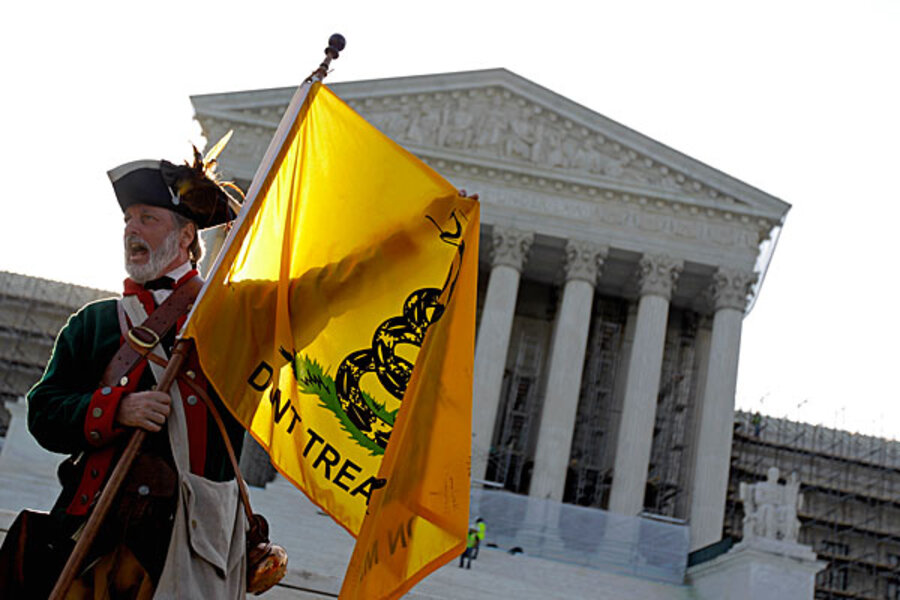Asked whether the tea party was waxing or waning, Rove said “both.” He argued that the tea party is really split into two factions with different aims and experiencing opposite political fortunes.
The smaller group (perhaps about a third of the overall tea party movement, by his calculation) “wants to be an adjunct to the Republican Party, wants to be the kingmakers. They want to be the guys who run the television ads, make the endorsements, and pick the candidates.”
Though Rove didn’t say so, this group could include leaders like Sen. Jim DeMint (R) of South Carolina, who is inside the party but often backs outside challengers to more established Republican figures in primary races. This is the waxing faction of the tea party for its high visibility.
The other tea party, the other two-thirds, doesn’t want to be an “adjunct” to the GOP. Instead, it aims to become a movement like the pro-life or Second Amendment or civil rights movement that wants “to influence people in both parties and hold their feet to the fire on issues of deficit, debt, freedom, limited government, and Obamacare.”
This is the tea party’s waning faction, currently “having difficulty figuring out how to become durable. They’re nervous about getting involved with others, they don’t have the visibility you get by running TV ads in a primary, and there are just some institutional difficulties for this group finding its way.”
But Rove was adamant that the rage about deficits and personal freedoms isn't going anywhere.
“We spend too much time looking at the movement,” he said. “Here’s the sentiment that gave rise to the movement … and that hasn’t waned. It’s big, it’s powerful, and it’s driving a lot of this election and particularly among independent voters who won’t go to a tea party meeting or don’t consider themselves tea party but … that’s what’s driving it.”







